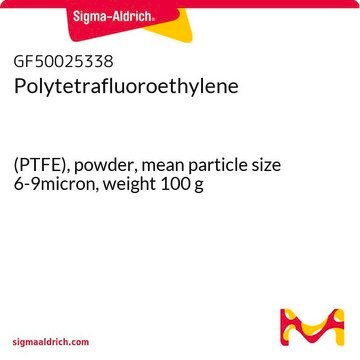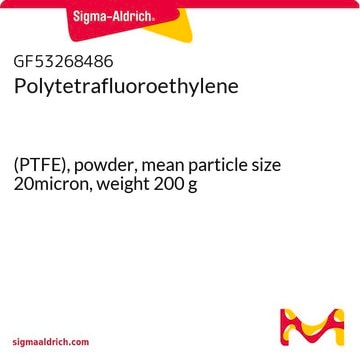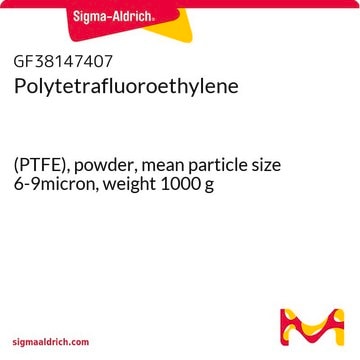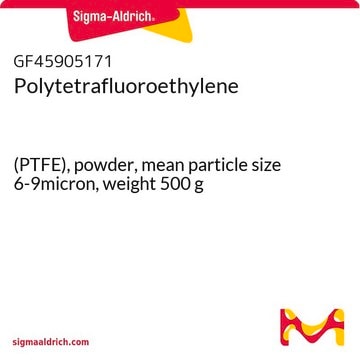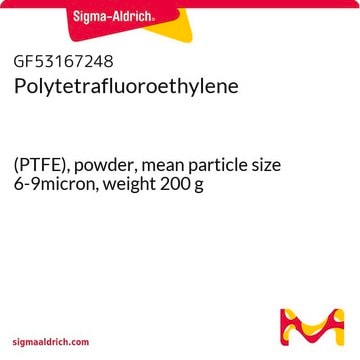The mean particle diameter is the average particle diameter, calculated by summing the diameters of all particles in a sample and dividing by the total number of particles.
468096
Poly(tetrafluoroethylene)
powder, 35 μm particle size
Sinônimo(s):
Fluorinated polymer, Fluoropolymer, PTFE
Selecione um tamanho
Selecione um tamanho
About This Item
Produtos recomendados
Formulário
powder
tamanho de partícula
35 μm
temperatura de transição
Tm 321 °C
densidade
2.1 g/mL at 25 °C
aplicação(ões)
battery manufacturing
cadeia de caracteres SMILES
F\C(F)=C(\F)F
InChI
1S/C2F4/c3-1(4)2(5)6
chave InChI
BFKJFAAPBSQJPD-UHFFFAOYSA-N
Procurando produtos similares? Visita Guia de comparação de produtos
Categorias relacionadas
Código de classe de armazenamento
11 - Combustible Solids
Classe de risco de água (WGK)
WGK 3
Ponto de fulgor (°F)
Not applicable
Ponto de fulgor (°C)
Not applicable
Equipamento de proteção individual
Eyeshields, Gloves, type N95 (US)
Escolha uma das versões mais recentes:
Já possui este produto?
Encontre a documentação dos produtos que você adquiriu recentemente na biblioteca de documentos.
Os clientes também visualizaram
Artigos
Polymer electrolyte membrane (PEM) fuel cells offer high efficiency and low-temperature operation, reducing oil use in light-duty vehicle transportation.
-
What is the exact meaning of the mean particle diameter?
1 answer-
Helpful?
-
-
Mean particle diameter가 35 μm라고 specification sheet에 적혀있는데, 이 기준이 정확히 무엇인지 궁금합니다. 각 particle이 직경 35 μm인 구와 동일한 부피를 가진 것일까요? 아니면, 2D 평면에서의 단면적이 직경 35 μm인 원과 동일한 것일까요? 감사합니다.
1 answer-
The size is determined by a dynamic light scattering technique. This method measures fluctuations in the intensity of scattered light from a sample, which are directly related to the Brownian motion of the particles. Smaller particles move faster, causing more rapid fluctuations in the scattered light. This allows for the calculation of their diffusion coefficient and subsequently their size using the Stokes-Einstein equation.
Helpful?
-
Active Filters
Nossa equipe de cientistas tem experiência em todas as áreas de pesquisa, incluindo Life Sciences, ciência de materiais, síntese química, cromatografia, química analítica e muitas outras.
Entre em contato com a assistência técnica





